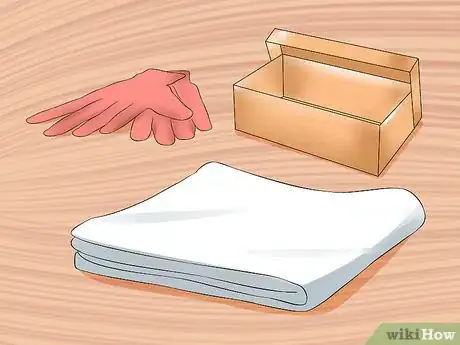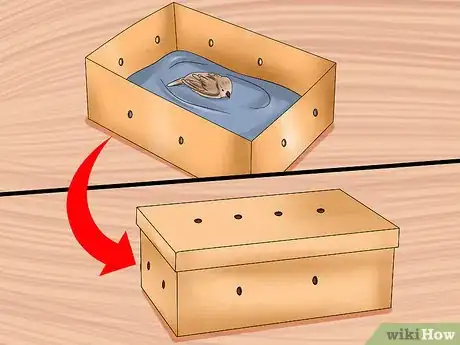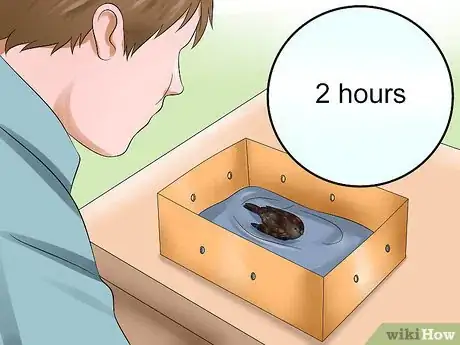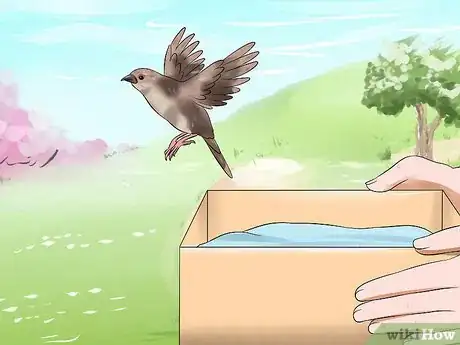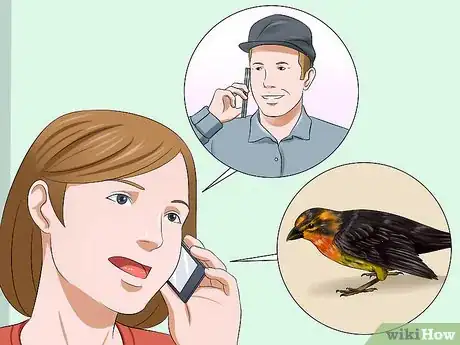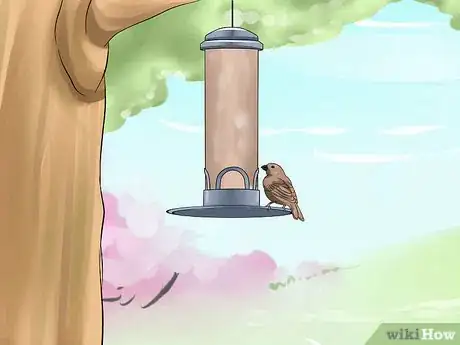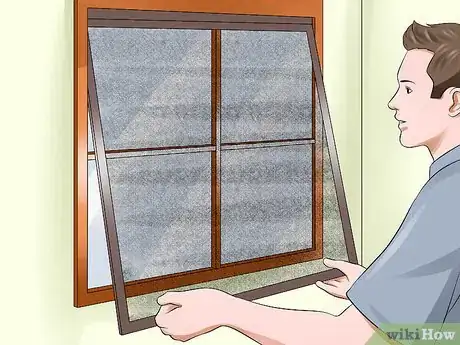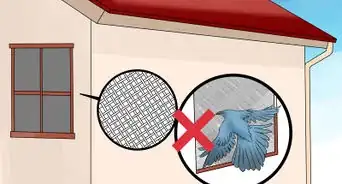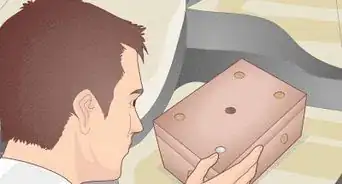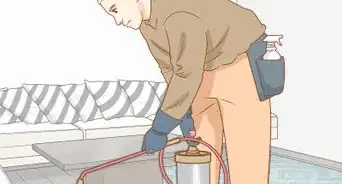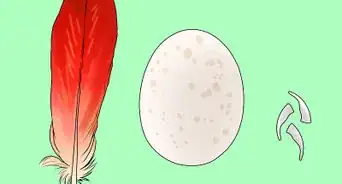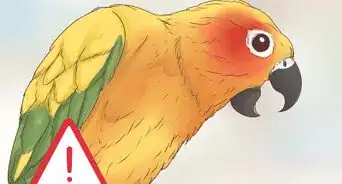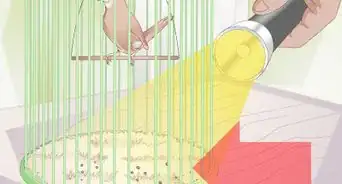This article was co-authored by Pippa Elliott, MRCVS. Dr. Elliott, BVMS, MRCVS is a veterinarian with over 30 years of experience in veterinary surgery and companion animal practice. She graduated from the University of Glasgow in 1987 with a degree in veterinary medicine and surgery. She has worked at the same animal clinic in her hometown for over 20 years.
There are 7 references cited in this article, which can be found at the bottom of the page.
wikiHow marks an article as reader-approved once it receives enough positive feedback. This article received 18 testimonials and 85% of readers who voted found it helpful, earning it our reader-approved status.
This article has been viewed 351,285 times.
According to the Bird Conservation Network more than 100 million North American birds die every year from window collisions.[1] These accidents are most common during spring mating season. It is illegal to keep a wild bird in your possession indefinitely. However, you can keep it for a couple of hours to allow it to recover from a concussion.
Steps
Caring for an Injured Bird
-
1Refrain from interacting with the bird more than is necessary. More likely than not the bird has sustained a concussion, in which case it should be removed from all stimuli. Anything else will make its condition worse. If it has sustained injuries to its limbs, it will require professional assistance anyway.
-
2Be prepared. If birds frequently collide into your windows, be sure to keep on hand a towel, a small box (a shoe box is ideal), gloves, and, if possible, safety glassesAdvertisement
-
3Observe the bird. Often the bird will only need a couple of minutes to recover. You should stay to watch the bird and ensure that no predators attack it before it recovers. If it does not recover within five or six minutes you should be more proactive.[2]
- If you are not comfortable handling a bird you should call the local bird or wildlife rehabilitation center immediately. These can be located with the Wildlife Rehabilitation Information Directory.
- If the bird has a shoulder injury it might be able to fly for short distances horizontally. However, it will not be able to lift its wings above its shoulders or obtain any elevation in its flight.
- Shoulder or wing injuries will require skilled medical assistance and months of rehabilitation. If the bird seems to have extensive damage to its limbs, call the local bird or wildlife rehabilitation center.[3]
- Conversely, if the bird seems unconscious the bird has sustained head trauma and will merely need a safe place to relax.
-
4Get a paper towel and cardboard box. Removing all stimuli will significantly increase the probability of the bird recovering from a potentially fatal concussion. You want a small box that will block all incoming light. To make it comfortable you should line it with a paper towel or a soft cotton cloth.[4]
- If the bird is larger, you can place a towel on the bottom of a paper bag and staple or tape the top the bag, leaving enough of a crack to allow for airflow. However, if the bird is large enough to potentially injury you, you should consider avoiding contact and calling for professional assistance immediately.[5]
-
5Pick up the bird. Use gloves and safety goggles if possible. Hold the bird upright so that it can breathe. Use a firm grip without squeezing. Hold by the wings, near the body.[6]
-
6Place the bird into the box and shut the box lid. Make sure the box has breathing holes in it. Put the box in a warm sheltered location (out of direct sunlight). Keep it away from predators, including cats.
-
7Check on the bird periodically. Observe the box every 20 minutes for about 2 hours. When the bird appears to have recovered take it outside.
-
8Let the bird go. After two hours take the box outside to the woods. Remove the lid. Watch to see if the bird flies away.[7]
-
9Call experts. If after two hours the bird is not able to fly away you should consult the Wildlife Rehabilitation Directory. Call an expert who can provide specialized care for the bird.
- Do not keep the bird in your possession for more than two hours. It is illegal to keep a wild bird.
Preventing Accidents
-
1Move your feeder. If your feeder is close enough to the window, birds won’t be able to pick up enough velocity to hurt themselves when flying into it. If it is far enough away, then the bird will be more likely to recognize that the window is not part of the natural environment.
- Ideally you should place your feeder either less than 3 feet from the window or more than 30 feet from it.[8]
-
2Use white drapery. Birds are drawn to the reflection of the natural environment that they see in your windows. Installing drapes or blinds will obstruct that reflection. This should reduce the likelihood of them flying into your window.[9]
- You can also place decals on your window. However, to significantly reduce the likelihood of birds flying into the window you will need to have stickers placed no more than 2 inches apart horizontally and 4 inches apart vertically. This would obstruct much of your view. [10]
-
3Install a bug screen. These can be doubly effective. They will reduce the reflectivity of the glass, decreasing the likelihood that birds will fly into the window. Furthermore, they will provide cushion and reduce the chance of injury if a bird does fly into your window.[11]
Expert Q&A
-
QuestionWhy do birds die when they hit a window?
 Pippa Elliott, MRCVSDr. Elliott, BVMS, MRCVS is a veterinarian with over 30 years of experience in veterinary surgery and companion animal practice. She graduated from the University of Glasgow in 1987 with a degree in veterinary medicine and surgery. She has worked at the same animal clinic in her hometown for over 20 years.
Pippa Elliott, MRCVSDr. Elliott, BVMS, MRCVS is a veterinarian with over 30 years of experience in veterinary surgery and companion animal practice. She graduated from the University of Glasgow in 1987 with a degree in veterinary medicine and surgery. She has worked at the same animal clinic in her hometown for over 20 years.
Veterinarian A bird in flight is traveling at a great speed. When stopped by a window, their forward momentum is sufficient to break their neck, often causing instant death.
A bird in flight is traveling at a great speed. When stopped by a window, their forward momentum is sufficient to break their neck, often causing instant death.
References
- ↑ http://www.bcnbirds.org/window.html
- ↑ http://www.mnn.com/earth-matters/animals/questions/how-should-i-care-for-a-stunned-bird-after-it-flies-into-a-window
- ↑ http://www.avianhaven.org/window_strikes.html
- ↑ http://www.wild-bird-watching.com/Injured-Bird.html
- ↑ http://www.avianhaven.org/window_strikes.html
- ↑ http://www.wild-bird-watching.com/Injured-Bird.html
- ↑ http://www.wild-bird-watching.com/Injured-Bird.html
- ↑ http://web4.audubon.org/bird/at_home/SafeWindows.html
- ↑ http://web4.audubon.org/bird/at_home/SafeWindows.html
About This Article
If a bird just hit your window, watch it for a few minutes to see if it recovers on its own. If it doesn’t, you can care for the bird by gently placing it inside a cardboard box, but make sure to wear gloves to protect your hands while you’re handling the bird. Then, place the box in a warm, sheltered location away from predators, such as cats, and check on the bird periodically for the next couple of hours. After 2 hours, release the bird outside, or call a wildlife expert if the bird is not able to fly away. For more advice from our Veterinary reviewer, including how to prevent birds from flying into your windows, keep reading.

